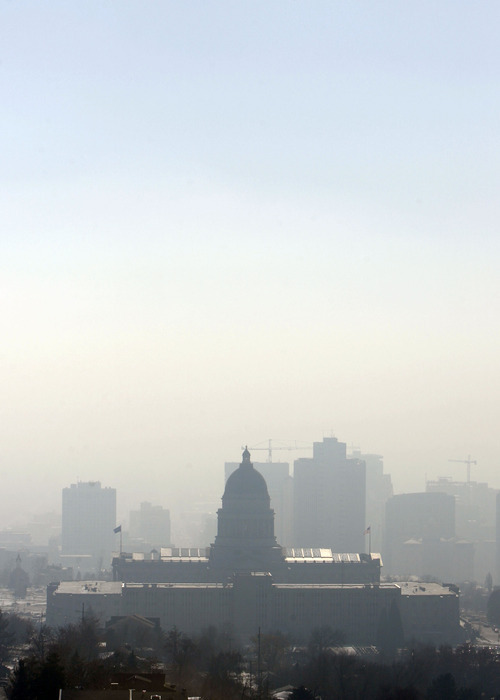This is an archived article that was published on sltrib.com in 2011, and information in the article may be outdated. It is provided only for personal research purposes and may not be reprinted.
This week's heat and red-air warnings raise a question: What will Utah's summer pollution problem be like if, as scientists suggest, climate change means more hot, stuffy days like Wednesday?
The Union of Concerned Scientists answered the question in a recent report that says Utahns, like other Americans grappling with ozone pollution, can expect breathing problems to rise because of the pollution-climate link, as well as the health care costs of treating the added illnesses.
Up to 46,852 more cases of asthma and other respiratory illnesses can be expected by 2020, and costs could rise by as much as $107 million a year to treat those illnesses, the group said in its report, "Climate Change and Your Health: Rising Temperatures, Worsening Ozone Pollution."
Nationally, the science advocacy group found the added ozone pollution related to climate change could trigger as many as 2.8 million additional serious respiratory illnesses at a cost of about $5.4 billion. The climate-related pollution also could mean an additional 5,100 infants and seniors hospitalized with serious breathing problems and 944,000 additional missed school days in the United States in 2020.
"It's clearly a problem," said the group's Rachel Cleetus, "and it's likely to get worse."
Ozone pollution is different from the "ozone layer," which is about 10 to 20 miles above the earth and protects it from the sun's harmful rays.
Ground-level ozone is typically a summertime problem in Utah's urban areas, where chemicals and engines release pollutants that, when cooked in the sun and heat, become ozone pollution. And when ozone builds up on sunny afternoons, it causes what doctors describe as a kind of sunburn on the lungs, triggering asthma attacks, coughing and poor lung function.
The scientists' study assumes that projected temperature increases will boost ozone concentrations by about 2 parts per billion. The current limit for ozone is 75 parts per billion.
Although Utah met federal ozone limits for years, tougher new standards are likely to mean the state will have to develop plans for reducing the pollutants that lead to ozone problems. Additionally, the U.S. Environmental Protection Agency has been reviewing the prospect of still tougher limits and is expected to release its decision within weeks.
Michelle Hofmann, a Salt Lake pediatrician who has worked on strategies to deal with asthma, was not surprised by the link made in the new health-impacts report.
"We know ozone concentrations will increase with climate change, and presumably so will health impacts," she said.
The report is based on analysis of climate trends (both observed and modeled), economics and health studies. It was reviewed by experts in those fields before the Union of Concerned Scientists released it in June.
The report said California would suffer most in terms of cost. Others feeling the biggest cost impacts would be Texas, New York, Pennsylvania, Illinois, Ohio, Michigan, North Carolina, New Jersey and Virginia.
In Utah, the report estimated that by 2020 the number of added acute respiratory episodes would range from 15,995 to 46,852. Added costs would range from $7.8 million to $107.2 million.
Online
O To see the report on climate change and its ozone-related impacts on health, see the Web page • bit.ly/kknWVP



